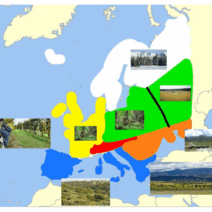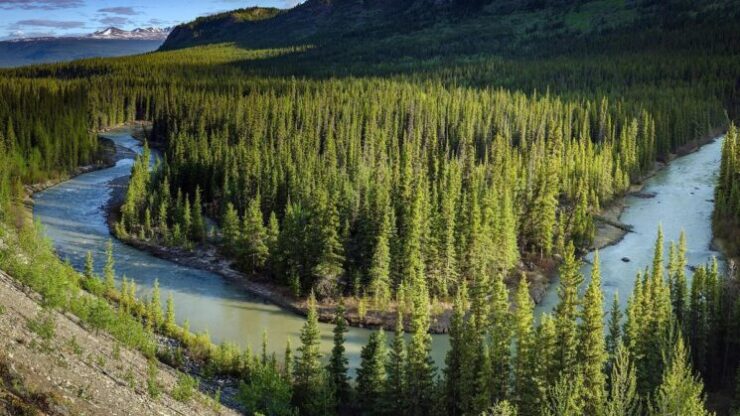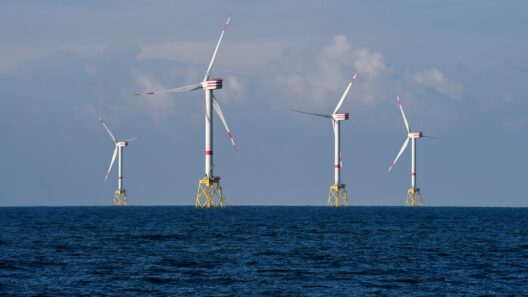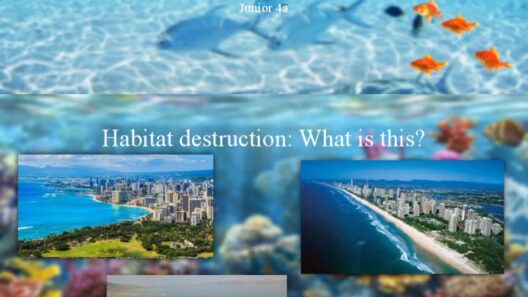The boreal forest, often referred to as the taiga, occupies a vast stretch of northern latitudes, unveiling a formidable expanse of evergreen trees that endure biting winters and fleeting summers. It stands as a colossal green tapestry, woven from an intricate array of life, yet this rich ecosystem is now grappling with the pernicious effects of global warming. The once-steadfast composition of this biome is in a state of flux, a tale narrated not just by the trees, but also by the whispers of the wind, the songs of the birds, and the rustling of unseen creatures.
This unique forest, a biogeographic wonder, stretches across parts of Canada, Russia, Alaska, and Scandinavia. It acts as a vital carbon sink, sequestering significant amounts of carbon dioxide from the atmosphere, thereby playing a pivotal role in mitigating climate change. Yet, as temperatures rise inexorably, this crucial ecosystem is facing challenges that threaten its very existence. The fabric of the taiga is fraying, one thread at a time.
The tale of the taiga begins with a delicate balance—a symbiotic relationship between the cold climate and the hardiness of its flora and fauna. Characterized by coniferous species such as spruces, firs, and pines, the forest thrives under circumstances that seem inhospitable. These trees have adapted to extreme temperatures, short growing seasons, and nutrient-poor soils, exemplifying resilience in adversity. However, global warming is positioning itself as a nefarious adversary, altering the foundational conditions upon which these majestic giants rely.
As the climate warms, the taiga is experiencing shifts that reverberate through its ecological corridors. One of the more insidious consequences is the permafrost thaw. Underneath the surface, permafrost has long acted as a frozen reservoir, locked away for millennia. As temperatures rise, this layer begins to melt, releasing greenhouse gases like methane and carbon dioxide—culprits that further exacerbate climate change. Each thawing patch is akin to a ticking time bomb, releasing carbon that has been sequestered for centuries, thereby accelerating the very changes that bring about its own demise.
Moreover, the flora of the boreal forest is embarking on a transformative journey, adjusting to warming temperatures which facilitate the encroachment of species previously confined to temperate regions. This invasion isn’t merely a benign addition; it threatens to outcompete native species, undermining the intricate web of life that has thrived in symbiosis for centuries. Each new arrival is a silent battle cry—a competition for resources that could lead to the extinction of endemic flora and fauna.
Wildfires, once a natural part of boreal forest dynamics, are becoming more frequent and intense, kindled by drier conditions and warmer temperatures. The taiga’s relationship with fire is a complex one, as some species have evolved to rely on fire for regeneration. However, the increased frequency and severity of these fires are decimating large swathes of forest, releasing more carbon into the atmosphere and altering landscapes irreparably. What once stood evergreen and robust now becomes a charred memory, a sobering reminder of nature’s fragility.
The animal inhabitants of the taiga grapple with these shifts in their habitat. Species such as moose, wolves, and lynxes find their migratory routes disrupted, their food sources diminished. The changing climate affects mating patterns, foraging behaviors, and even survival rates. For many, this is a harbinger of change, a call to adapt or face potential extinction. The once-dominant chorus of the forest is now punctuated by an unsettling silence as species struggle to cope with their rapidly changing home.
Yet, amid this narrative of despair, there exists a flicker of hope. Conservation initiatives that aim to protect and restore boreal forests are gaining momentum. Efforts to reforest, maintain biodiversity, and bolster resilience are crucial as the taiga undergoes its transformation. By conscientiously managing land use and promoting sustainable practices, we can restore parts of this critical ecosystem, allowing it to maintain its role as a carbon sink.
Furthermore, engaging local communities within conservation strategies fosters a sense of stewardship, linking human well-being to the health of the taiga. These vibrant relationships can entice collective action, forming grassroots movements aimed at preserving the intricate mosaic of life that defines boreal forests. When humanity embraces our connection to nature, we recognize that protecting the taiga is not merely an ecological task but a moral obligation intertwined with our fate.
The taiga’s transformation is more than just an ecological phenomenon; it’s a clarion call, urging us to reevaluate our relationship with the planet. It highlights the urgency of climate action as we witness the unsettling metamorphosis of one of Earth’s vital ecosystems. The boreal forests serve as a poignant reminder of both the regenerative potential of nature and the consequences of inaction, offering a compelling narrative that beckons humanity to rise to the occasion.
In conclusion, the boreal forest remains a remarkable realm, a testament to resilience amidst adversity. However, its survival hinges upon a collective understanding and action against the tide of climate change. As the taiga faces unprecedented challenges, it is not only a testimony to the past but also a beacon for the future—a future that demands both reverence and responsibility to preserve the irreplaceable. As stewards of this planet, we must act decisively to ensure that the echoes of the boreal forests continue to resonate for generations to come.







